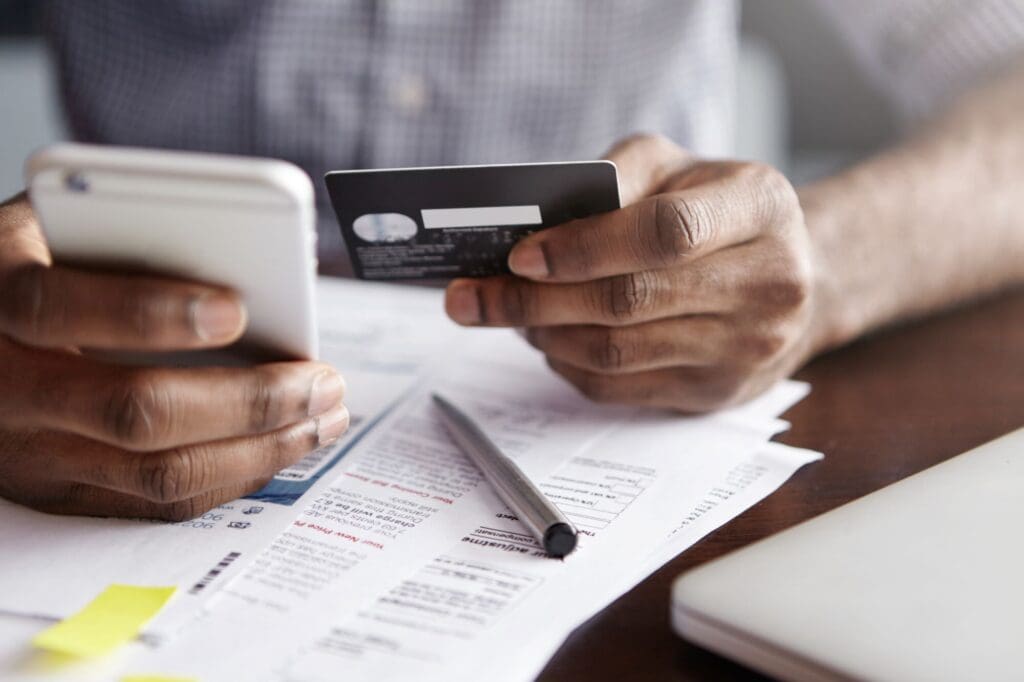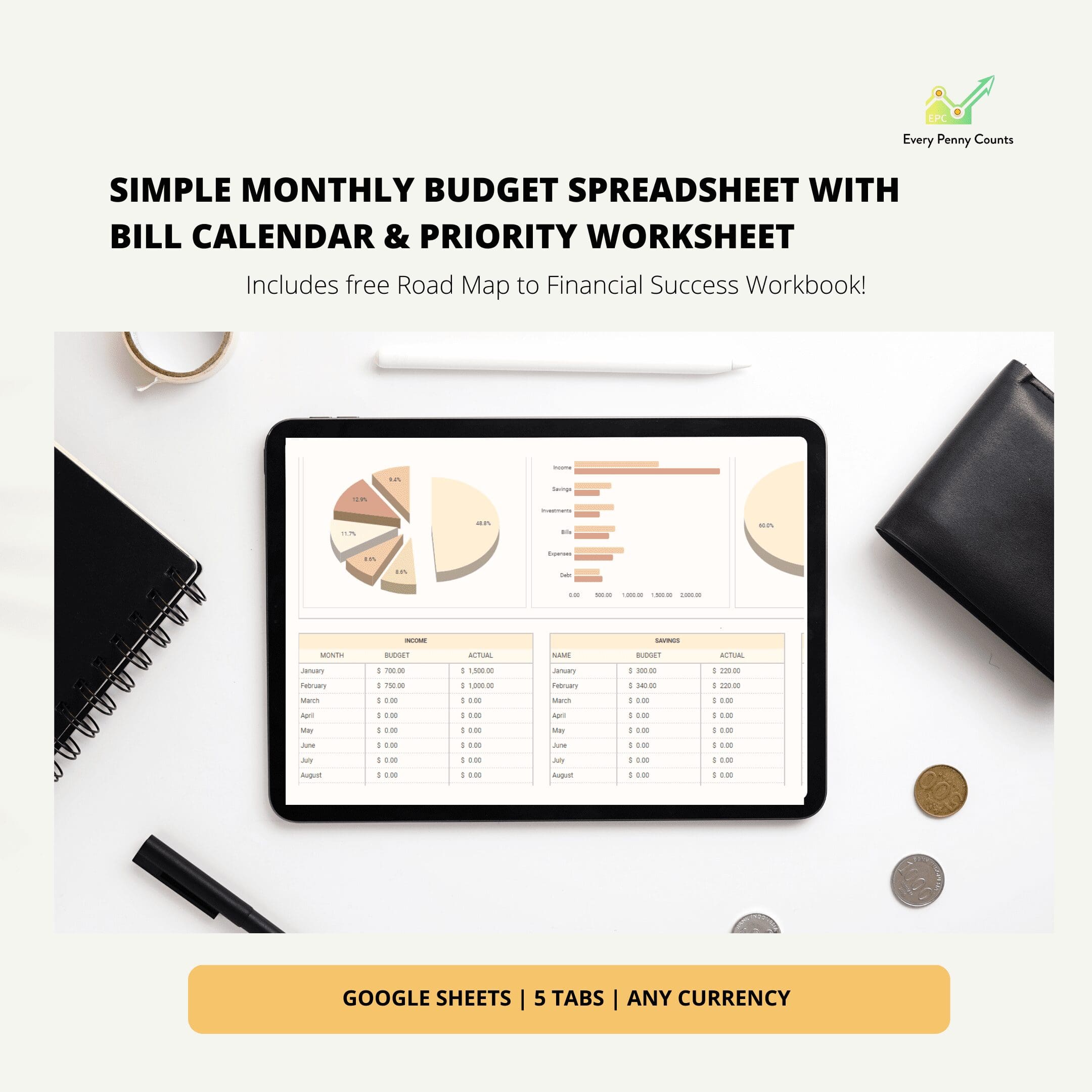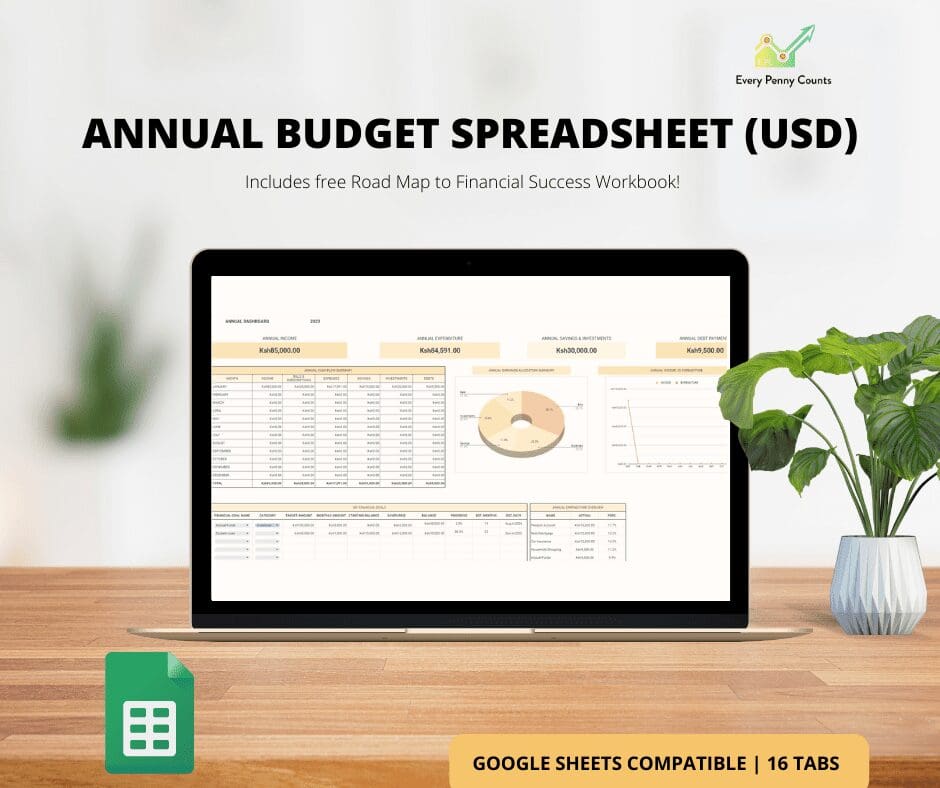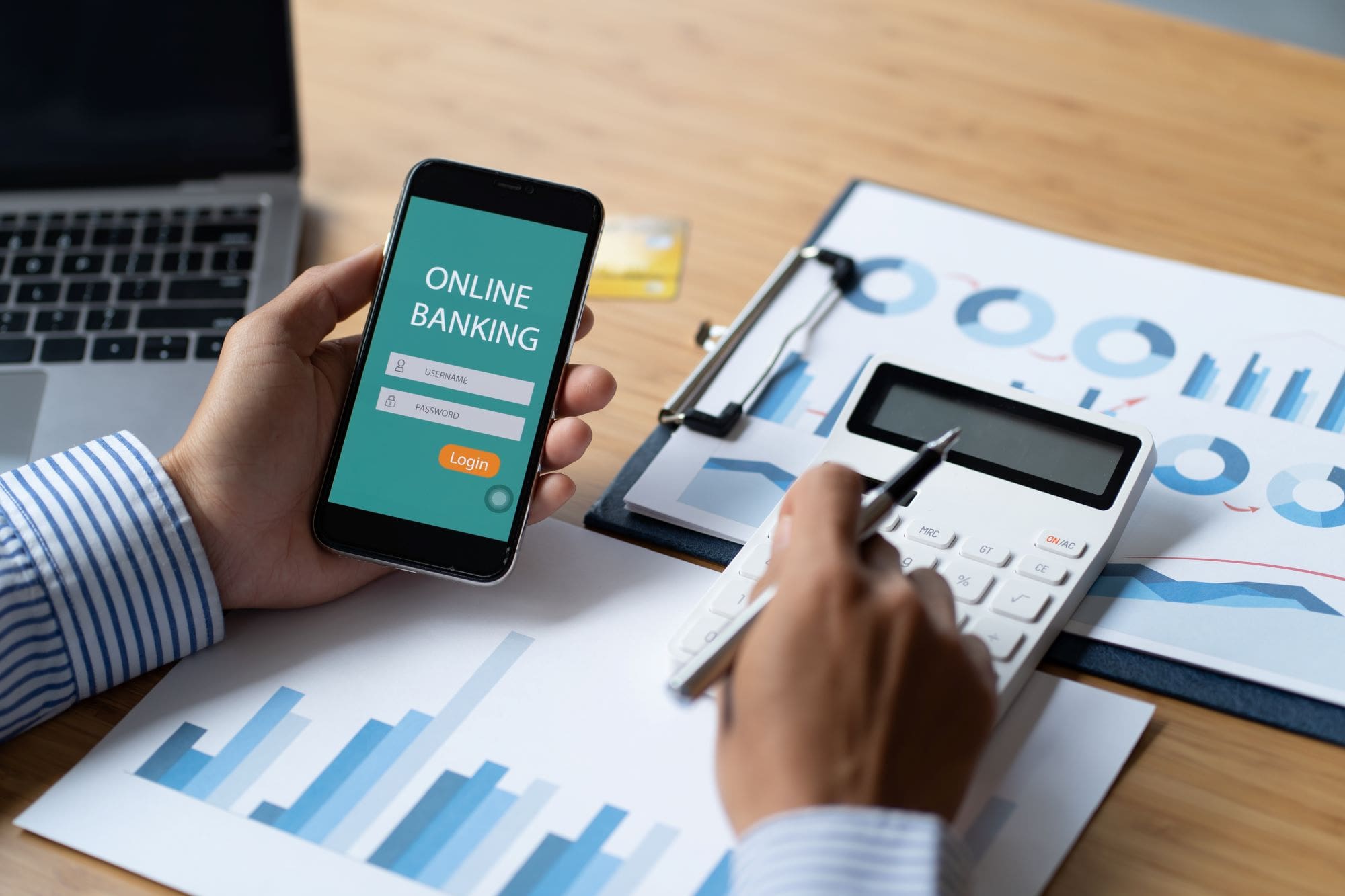
Good Debt and Bad Debt: What You Need to Know for Better Debt Management
Did you know there is good debt and bad debt?
The truth is that not all debt is created equal. Some credit can be good and will help you achieve your goals while other types of death bring nothing but misery.
I have read headlines in the past few weeks, and the better part of the year, actually, about how Kenyans are defaulting on loans. The increasing cost of living and unemployment rates are not making the situation any better. Credit, such as digital loans will continue to be an easy way to meet certain bills. And the default rate might continue to be high.
So, let’s talk about debt management, more specifically, the difference between good debt and bad debt.
In this article, you will learn the key differences between good debt and bad debt, and how to manage each type effectively. Whether you’re considering acquiring new debt or looking to manage existing debt, this guide will provide you with the knowledge you need to make informed decisions.
Related Read: Should You Start Investing When In Debt?
Table of Contents
ToggleDebt 101: Understanding Debt
Debt is simply money that you borrow with the agreement to pay it back, usually with interest. It’s a common financial tool that can help you achieve various goals, such as buying a home, funding education, or managing everyday expenses. However, not all debt serves the same purpose, and how you manage it can significantly impact your financial health.
When you take on debt, you’re essentially entering into a contract where you receive money upfront and agree to repay it over time. This repayment usually includes interest, which is the cost of borrowing the money. The interest rate and repayment terms can vary widely depending on the type of debt and the lender’s policies.
Debt can be broadly categorised into two types: secured and unsecured. Secured debt is backed by collateral, such as a house or car, which the lender can claim if you fail to repay the loan. Unsecured debt, on the other hand, is not backed by any collateral and includes things like credit card debt and personal loans.
The key to managing debt effectively lies in understanding its role in your overall financial picture. Not all debt is bad; some can actually work to your advantage if used wisely. As such, it’s very important to understand and differentiate between debt that can help you build wealth and debt that can drag you down.
Related Read: 5 Important Things To Consider Before Taking A Loan

What is Good Debt?
Good debt is debt that is considered an investment in your future. It has the potential to increase your net worth or generate income over time, making it a strategic financial move rather than a burden. When managed properly, good debt can help you achieve significant milestones and improve your financial standing.
The key characteristics of good debt include:
- Potential for return on investment – good debt is typically used to purchase assets that are likely to appreciate in value or generate income. This can include real estate, education, and certain types of business loans.
- Lower interest rates – good debt often comes with lower interest rates compared to bad debt. This makes it more affordable to repay and less likely to strain your finances.
- Long-term benefits – good debt usually offers long-term benefits that outweigh the costs of borrowing. For example, a mortgage enables you to own a home, which can appreciate in value over time. Similarly, a student loan can lead to higher earning potential through better job opportunities.
- Tax advantages – in some cases, good debt can provide tax benefits. For example, the interest paid on a mortgage or student loan may be tax-deductible, reducing your overall tax burden.
Common Types of Good Debt
As mentioned, not all debt is bad debt. So, how do you know what debt classifies as good debt? Here are some of the common types of good debts:
- Mortgages – taking out a mortgage to buy a home is often considered good debt. Homeownership can build equity and provide a stable living environment, with the potential for the property’s value to increase over time.
- Student loans – borrowing to finance your education can be a wise investment. Higher education typically leads to better job prospects and higher income, making it easier to repay the loan and benefit from the increased earnings.
- Business loans – if you’re starting or expanding a business, a business loan can be good debt. It can provide the necessary capital to grow your business, increase profits, and create more opportunities for financial success.
How to Manage Good Debt
While good debt can be beneficial, it’s important to handle it wisely to maximise its advantages and stay financially stable. Here are some strategies for managing good debt:
- Make timely payments – always ensure you make your debt payments on time. Late payments can lead to penalties, higher interest rates, and damage to your credit score. Set up reminders or automatic payments to stay on track and avoid missing due dates.
- Create a repayment plan – develop a clear repayment plan that aligns with your financial goals. There are two options to consider, debt snowball or the avalanche method. Debt snowball means focusing on debts with lower balances first while the avalanche method means you pay off debts with a high interest rate first. Having a debt repayment plan helps you keep track of your repayments and balances.
- Utilise extra payments – whenever possible, make extra payments toward your debt. Additional payments can reduce the principal balance faster, leading to less interest paid over the life of the loan. Even small extra payments can make a significant difference over time.
- Monitor your debt regularly – creating a repayment plan is nice and all but it’s not the last step. It’s important to keep track of your debt balances, interest rates, and repayment progress. This regular monitoring allows you to stay informed about your financial situation and make adjustments as needed. To make this easier, I recommend using tools like spreadsheets or financial apps to keep everything organised.
- Leverage tax benefits – some types of good debt, such as mortgages, offer tax advantages. Be sure to take full advantage of any tax deductions available to you. If you are unsure, consult with a tax professional or your financial advisor to understand how your debt can impact your taxes and to ensure you’re maximising your benefits.
- Avoid taking on too much debt – while good debt can be beneficial, it’s important not to overextend yourself. Borrow only what you need and what you can realistically afford to repay. Too much debt, even if it’s good debt, can strain your finances and limit your ability to achieve other financial goals.
Related Read: Are You Too Deep In Debt? 5 Top Signs To Watch
Everything You Need to Know About Bad Debt?
On the other hand, bad debt doesn’t provide any lasting value and often carries high interest rates, making it difficult to repay. Unlike good debt, bad debt doesn’t contribute to your financial growth or help you build wealth. Instead, it can trap you in a cycle of borrowing and repayment that hinders your financial progress.
The key characteristics of bad debt include:
- High interest rates – bad debt typically comes with high interest rates, which means you’ll end up paying significantly more than what you originally borrowed. This can make it challenging to pay off the debt and lead to long-term financial strain.
- No return on investment – bad debt is often used to purchase items that don’t appreciate in value or generate income. This includes consumer goods and services that depreciate quickly and don’t contribute to your financial well-being.
- Short-term gratification – bad debt is usually incurred for immediate gratification rather than long-term benefit. This can lead to a pattern of spending beyond your means and accumulating debt that doesn’t improve your financial situation.
- Negative impact on credit score – accumulating bad debt can negatively affect your credit score, making it harder to qualify for good debt in the future. High balances and missed payments on bad debt can signal to lenders that you’re a high-risk borrower.

Common Types of Bad Debt
So, what type of credit qualifies as bad debt?
- Credit card debt – credit card debt, which usually has high interest rates is one of the most common forms of bad debt. It’s easy to accumulate and hard to pay off, especially if you’re only making minimum payments. The interest charges can quickly add up, making it difficult to reduce the principal balance.
- Digital loans – access to credit has been made easier by digital and mobile lenders. You don’t even need to jump through hoops to access credit. A simple sign up process through your mobile is all you need and you can start borrowing. Unfortunately, the exorbitant interest rates and harassment from the lenders can cripple your financial situation and mental health.
- Payday loans – payday loans and in part, what we mostly refer to as Shylock loans, are short-term loans notorious for their exorbitant interest rates and fees. They can provide quick cash but often lead to a cycle of borrowing and repayment that can be financially crippling. Not forgetting the harassment from the lenders in case of default.
- Consumer loans – personal loans used for non-essential purchases, such as vacations or luxury items, are typically considered bad debt. These loans often have high interest rates and don’t provide any financial return.
How to Avoid Bad Debt
Is it possible to avoid bad debt? Absolutely! It can be hard, especially if you are struggling financially or you’re already used to easy access to credit most bad debt options have. However, it’s very possible to avoid bad debt. Here’s how you can do it:
- Live within your means – the most fundamental way to avoid bad debt is to spend less than you earn. Create a budget that accounts for your income and expenses, and stick to it. This helps you avoid relying on credit for everyday purchases.
- Save for emergencies – build an emergency fund to cover unexpected expenses, such as medical bills or car repairs. Having savings to fall back on prevents you from needing high-interest loans or credit cards in emergencies.
- Use credit wisely – if you use credit cards, do so responsibly. Charge only what you can afford to pay off in full each month to avoid interest charges. Keep track of your spending and avoid impulse purchases.
- Avoid payday and digital loans – steer clear of payday loans, digital loans, and other high interest, short-term loans. These types of loans can quickly trap you in a cycle of debt due to their exorbitant interest rates and fees.
- Educate yourself – understand the terms and conditions of any loan or credit product before committing. Know the interest rates, fees, and repayment terms to make informed decisions.
How to Deal With Existing Bad Debt
Already have bad debt? Not to worry. There is still hope and strategies you can implement to help you deal with it. Here’s how you can go about it:
- Assess your situation – start by listing all your debts, including balances, interest rates, and minimum monthly payments. This gives you a clear picture of what you owe and helps you prioritise which debts to tackle first.
- Create a repayment plan – develop a plan to pay off your bad debt. Focus on high-interest debts first, while making minimum payments on others. This strategy, known as the avalanche method, saves you money on interest in the long run.
- Negotiate with creditors – reach out to your creditors to discuss your situation. They may be willing to reduce your monthly payment, extend your repayment period, or offer a settlement. Being proactive can lead to more manageable repayment terms.
- Consider debt consolidation – do you have multiple loans with high interest rates? Debt consolidation, which means combining all the debts into one, can simplify your payments and reduce your monthly repayment amount. Ensure that you look for consolidation options that offer favourable terms.
- Limit new debt – while working to pay off existing bad debt, avoid taking on new debt. Focus on clearing your current balances before considering any new borrowing.
- Increase your income – while cutting back on expenses can help with extra funds for debt repayment, it might not be enough. Especially if you’ve already cut back as much as you can. That means looking for ways to boost your income, such as taking on a part-time job or freelance work. Extra income can be directed toward paying off your bad debt faster.
- Seek professional help – if your debt feels overwhelming, consider consulting a financial advisor or a credit counselling service. They can offer personalised advice and help you create a realistic plan to manage and eliminate your debt.
- Don’t give up – paying off bad debt can take time and effort, but it’s important to stay committed to your plan. Celebrate small milestones along the way to keep yourself motivated.
Final Word
Knowing the difference between good debt and bad debt is one of the best debt management hacks. Good debt can help you achieve your long-term goals and build wealth, while bad debt can hold you back and create financial stress.
Need help with debt management? Get one of my affordable budget planners, which includes a debt tracking tool.
FAQ
How can I tell if my debt is good or bad?
Evaluate the purpose of the debt, the interest rates, and the long-term benefits. Good debt generally supports financial growth, has lower interest rates, and offers long-term advantages. Bad debt usually comes with high interest rates and doesn't contribute to your financial well-being.
Should I avoid taking on any debt?
Not necessarily. While it's important to avoid bad debt, good debt can be beneficial when managed properly. The key is to borrow responsibly and ensure that the debt serves a productive purpose, like buying a home or investing in education.
What steps can I take to avoid bad debt?
Live within your means, save for emergencies, use credit wisely, avoid high-interest loans like payday loans, and educate yourself about loan terms and conditions. Planning and budgeting are essential to avoid falling into the trap of bad debt.
Can I have both good and bad debt at the same time?
Yes, it's possible to have both. The key is to focus on managing and paying off bad debt while maintaining and leveraging good debt. Prioritise paying off high interest bad debt first to reduce financial strain.
What should I do if I already have bad debt?
Start by assessing your situation and creating a repayment plan. Consider debt consolidation, negotiate with creditors, limit new debt, and explore ways to increase your income. Seeking professional financial advice can also help you manage and eliminate bad debt.












